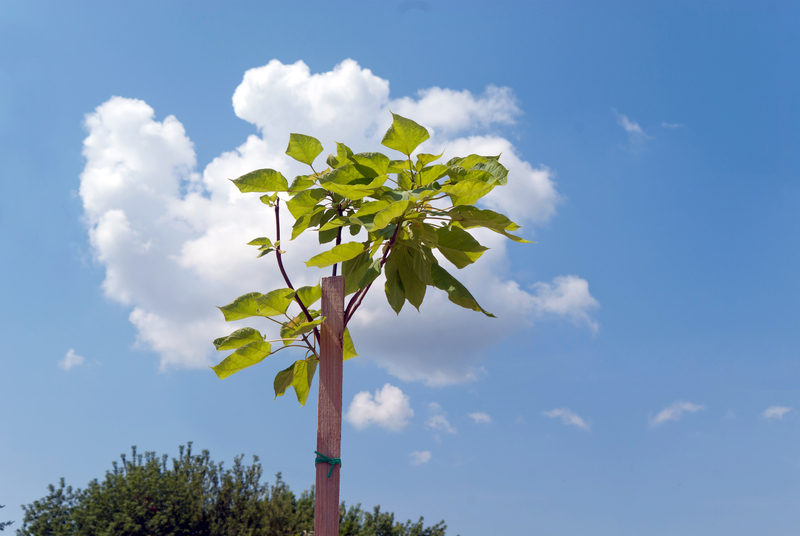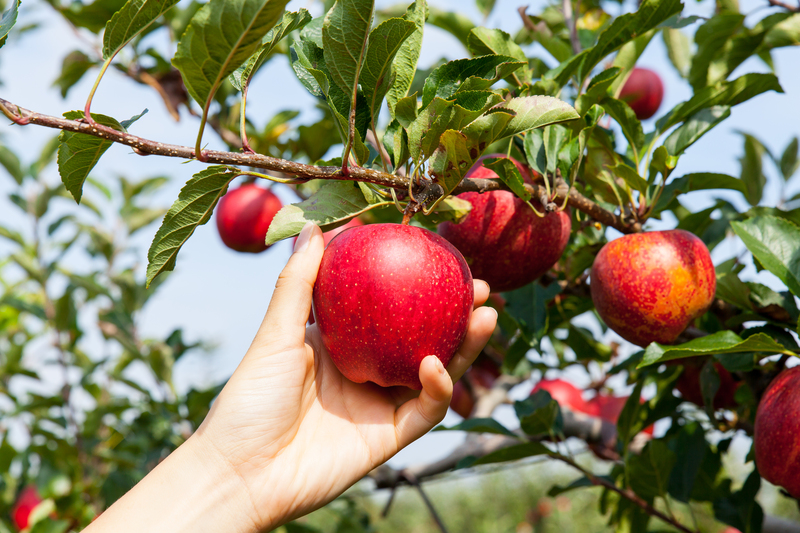Nurturing Gardens where Dogs Roam Free
Posted on 04/09/2025
Nurturing Gardens Where Dogs Roam Free: Creating a Pet-Friendly Outdoor Oasis
Are you dreaming of a vibrant garden where you and your furry companions can unwind? Nurturing gardens where dogs roam free is not just a fantasy--it's a joyful reality for many pet owners. By marrying thoughtful landscaping with canine-friendly elements, you can cultivate a lush, beautiful space that's both welcoming and safe for your pooch. Here, we'll explore the essentials of designing and maintaining a nurturing dog-friendly garden, so your dog and your blooms can flourish together.

Why Consider a Dog-Friendly Garden?
- Promotes Canine Health: Unleashed dogs enjoy exercise, mental stimulation, and exploration in their personal garden haven.
- Enhances Human-Pet Bond: Spending time outdoors together strengthens your connection with your four-legged friend.
- Safe Environment: A well-designed garden protects your pet from hazards found in traditional yards.
- Reduces Indoor Mess: A designated outdoor space means less dirt and fur inside your house.
*Gardens where dogs roam free* are more than backyards--they're extensions of your pets' world. With the right choices, you can nurture both greenery and happy, secure dogs.
Planning Your Dog-Friendly Garden Design
Successful dog-friendly gardens blend aesthetics with practicality. Discover the crucial steps to get started:
Analyze Your Space
- Size & Layout: Map out path options, play areas, and shaded resting spots.
- Accessibility: Ensure your dog can easily navigate the garden with gentle slopes or non-slip surfaces.
- Boundaries: Keep your pet safe using secure but attractive fencing--consider hedges, living fences, or simple wooden panels.
Prioritize Safety: Avoid Harmful Plants & Materials
Not all garden plants are dog-safe. Before planting, research which species are toxic to pets. Steer clear of:
- Lilies
- Oleander
- Azaleas
- Daffodils
- Foxglove
- Yew
Pro tip: Check with your veterinarian or the ASPCA Poison Control database for an extensive list.
Choose Pet-Friendly Plants and Landscaping Elements
Dog-safe gardens flourish with robust, nontoxic, and low-maintenance plant varieties. Some safe options include:
- Sunflowers
- Marigolds
- Roses (be cautious of thorns)
- Ferns (e.g., Boston fern)
- Basil, thyme, and rosemary (aromatic herbs)
Grassy lawns are paw-perfect for rolling and zoomies. Hardy, dog-tolerant grass varieties such as Buffalo grass, Kentucky Bluegrass, or Fescue handle paw traffic and recover from digging better than delicate ornamental species.
Building Durable Dog Pathways and Activity Zones
Active pups love to patrol, chase, and explore. Creating designated pathways and play zones within your nurturing garden helps direct their energy.
Installing Dog Paths
- Use paw-friendly materials: Mulch, pea gravel, decomposed granite, or flagstone won't hurt your pup's pads.
- Curvy, looping paths: Dogs are natural browsers. Winding trails let them explore and satisfy their curiosity.
- Encourage repeat routes: Dogs love routine. Border plantings keep them on track and prevent accidental trampling.
Creating Play Zones
A *tailored playground* can channel digging and play away from delicate flowerbeds:
- Sand or dirt digging pit: Bury toys or treats to keep canines entertained.
- Agility setups: Tunnels, hoops, and ramps transform gardens into outdoor gyms for energetic dogs.
- Water features: Shallow splash pools or trickling fountains provide hydration and fun, especially for water-loving breeds.
Shaded Retreats and Rest Areas
Dogs overheat quickly. Nurturing gardens where dogs roam free should provide ample cool spots. Integrate the following:
- Mature trees or trellises: Plant fast-growing shade trees, or install vines on pergolas for dappled cover.
- Raised decks: Cool, elevated lounging spots shield your pet from hot ground.
- Outdoor dog beds: Weatherproof beds give your furry friend a soft resting area amid the greenery.
Remember: Always ensure fresh water is available--especially in warm weather.
Garden Maintenance Tips for Dog Owners
Maintaining gardens where dogs roam free involves a few extra precautions:
Pet-Safe Organic Gardening
- Avoid chemical fertilizers and pesticides. Many are toxic to dogs and can cause illness if ingested or absorbed through paws.
- Use natural solutions: Opt for compost, mulched leaves, or fish-based fertilizers. Neem oil and insecticidal soap are safer alternatives for pest control.
- Monitor mulch: Cocoa mulch is toxic to dogs--swap it for pine, cedar, or rubber mulch instead.
Repair and Restore
- Promptly reseed worn or bare patches: Choose fast-growing, hardy grasses for quick repairs.
- Install barriers or decorative fencing: Shield sensitive garden beds using low fences or dense shrub borders.
- Regular cleaning: Pick up waste often to keep lawns fresh, healthy, and odor-free.
Balancing Beauty and Practicality in a Dog-Friendly Garden
With a bit of planning, you can strike a perfect balance between aesthetics and utility. Here's how to create a nurturing garden where dogs are free to roam yet plants still thrive:
Elevated or Container Gardening
- Raised beds or vertical planters allow delicate or prized plants to stay out of harm's (and paws') way.
- Large containers: Place them strategically to define paths, add structure, and protect edibles or ornamentals.
Using Robust, Fast-Recuperating Plants
- Groundcovers: Creeping thyme, Irish moss, and clover tolerate occasional trampling and fill in bare spots.
- Dense shrubs: Boxwood, laurel, or mock orange double as living fences and sensory hedges for your dog's delight.
Appealing to the Senses--For Both You and Your Dog
- Variety of scents: Planting herbs (lavender, mint), scented shrubs, or fragrant flowers stimulates your dog's keen nose and creates a calming ambiance.
- Textures: Mix tall grasses, feathery ferns, and smooth flagstones for a tactile-rich landscape.
Addressing Common Challenges in Dog Gardens
Every pet-and-plant paradise comes with challenges, but creative solutions abound.
Paw Damage to Lawn and Beds
- Rotate play areas: Use moveable barriers or toys to shift activity, allowing tired grass time to recover.
- Train your dog: Positive reinforcement can teach your dog to stick to designated paths and avoid new plantings.
Digging Dilemmas
- Create a dedicated digging spot: Fill a sandpit with buried treats to satisfy this instinct safely.
- Add distractions: Toys, obstacles, or sensory plants help redirect energy.
Marking and Urine Spots
- Water the area: Dilute urine by hosing down frequently used spots to prevent yellow patches.
- Supplement the diet (with veterinary advice): Some supplements can make urine less damaging to turf.
- Train for specific potty spots: Designate a gravel or mulch corner as a bathroom zone.
Benefits of Allowing Dogs to Roam Free in the Garden
- Exercise: Off-leash play means healthier, happier dogs.
- Mental stimulation: Natural sights, smells, and textures enrich your pet's mind.
- Reduced anxiety and stress: Outdoor freedom calms many dogs and reduces undesirable behaviors.
- Family bonding: Gardens provide shared experiences and memories for you and your pet.
Real-Life Success: Inspiring Stories from Nurtured Dog Gardens
Many devoted dog lovers have transformed their outdoor spaces into safe and thriving sanctuaries. Consider Jane, whose garden where her dogs roam free bursts with resilient blooms and shaded trails. Her secret? Focusing on strong groundcovers, a dedicated digging box, and reachable water features for her Labradors. Or the Williams family, who installed a winding stone path and agility ramp to keep their herding dog busy and happy--all while enjoying fragrant pollinator-friendly flowers.

Top Mistakes to Avoid in Dog-Friendly Gardens
- Choosing toxic plants without realizing it. Always double-check before planting.
- Neglecting shade and water. Dogs need a cool, hydrated retreat on hot days.
- Forgetting containment. Proper fencing or borders are essential for your dog's safety.
- Using chemicals. Always select organic, dog-safe garden products.
Final Thoughts: Embrace the Joy of Nurturing Gardens Where Dogs Roam Free
Cultivating a safe garden where dogs roam free brings immense gratification. It supports your pet's well-being, enhances your landscape, and creates a harmonious oasis for all household members--paws and hands alike! By thoughtfully selecting dog-safe plants, prioritizing pet-centric design, and maintaining your yard organically, you'll nurture a lively, dog-friendly garden that endures the test of time.
So roll up your sleeves, gather your gardening tools, and leash your imagination. A flourishing, nurturing garden where your dog can truly roam free is within your reach.

